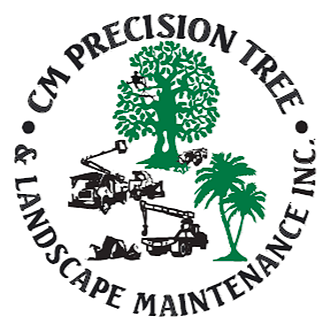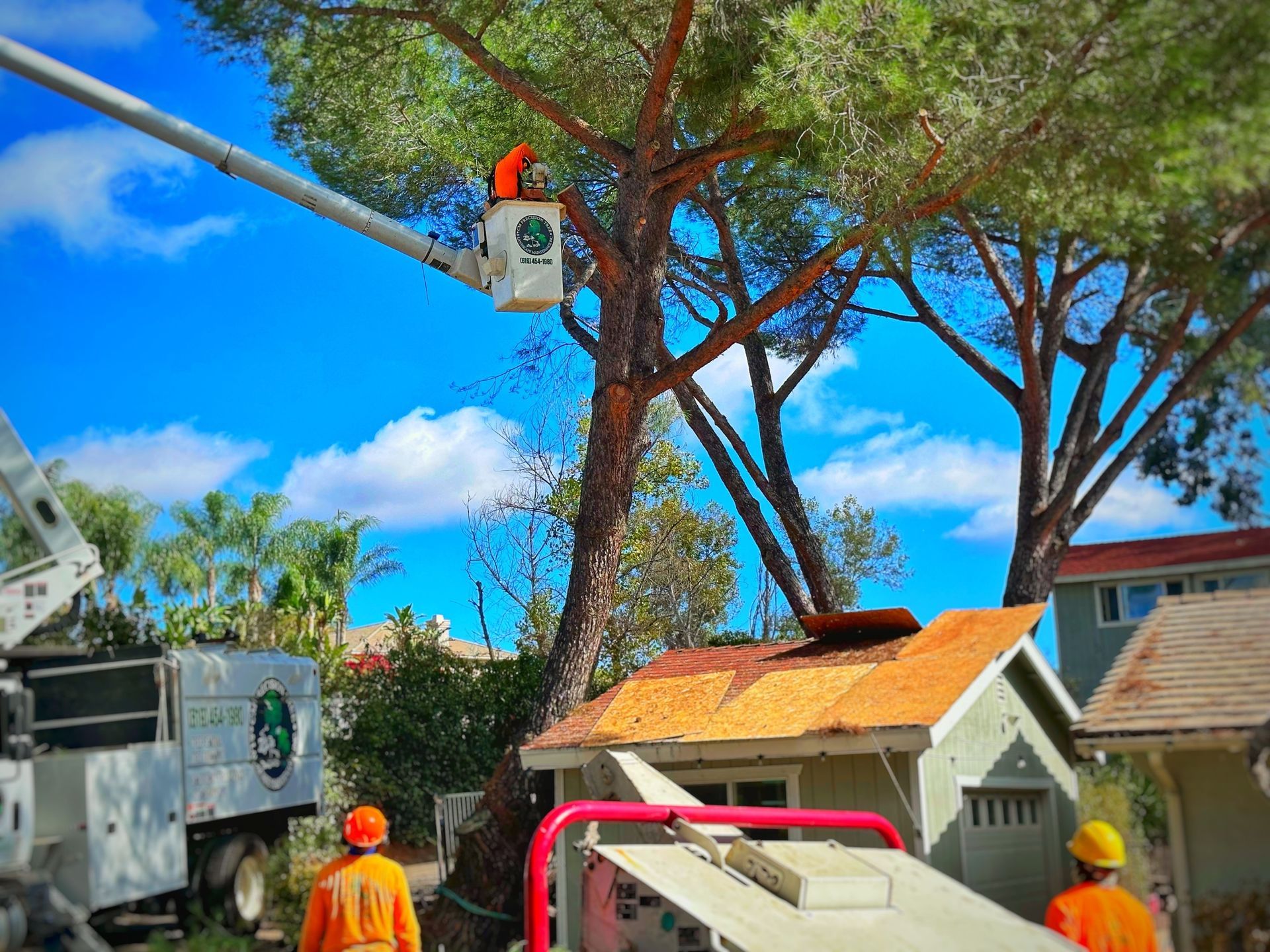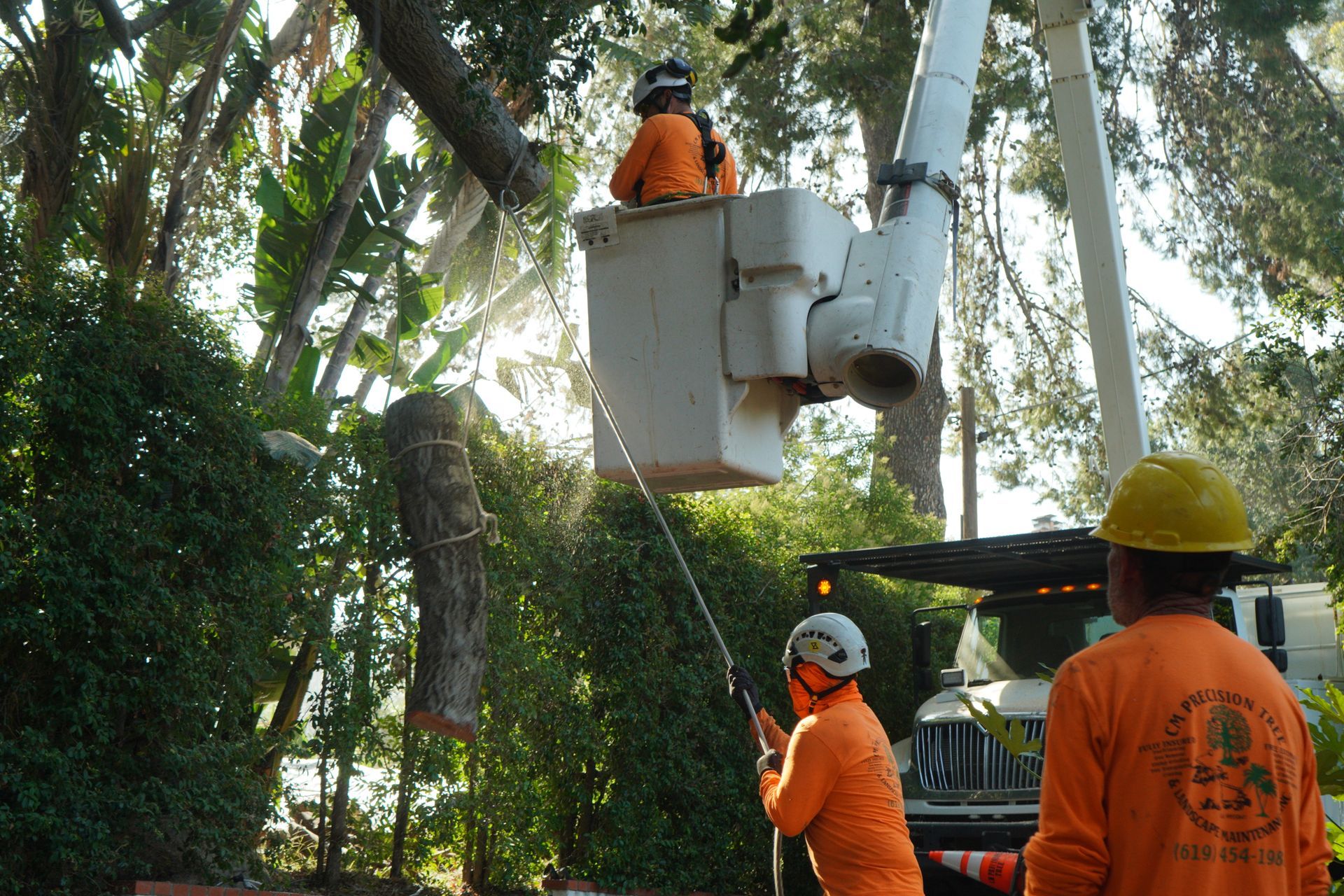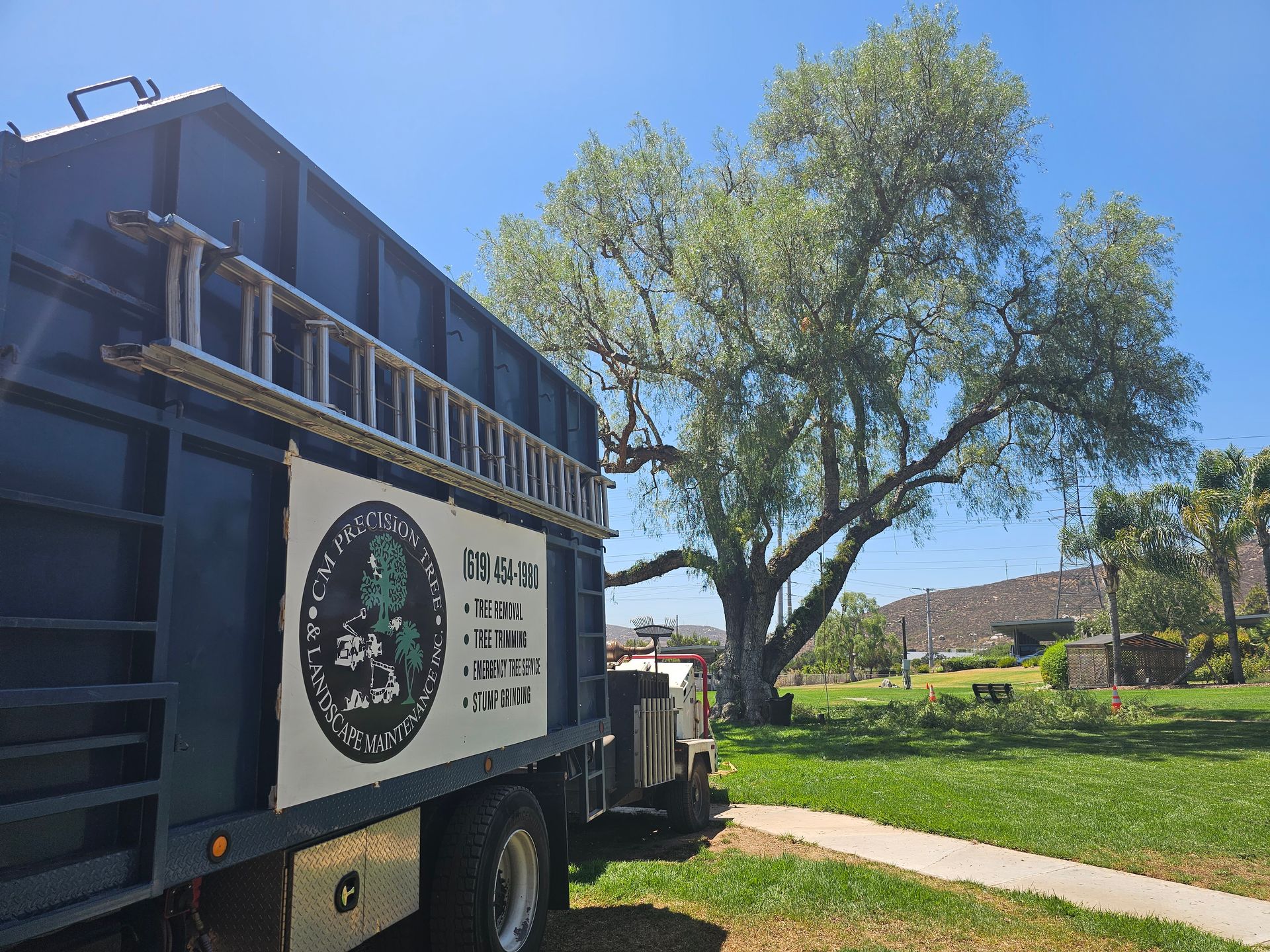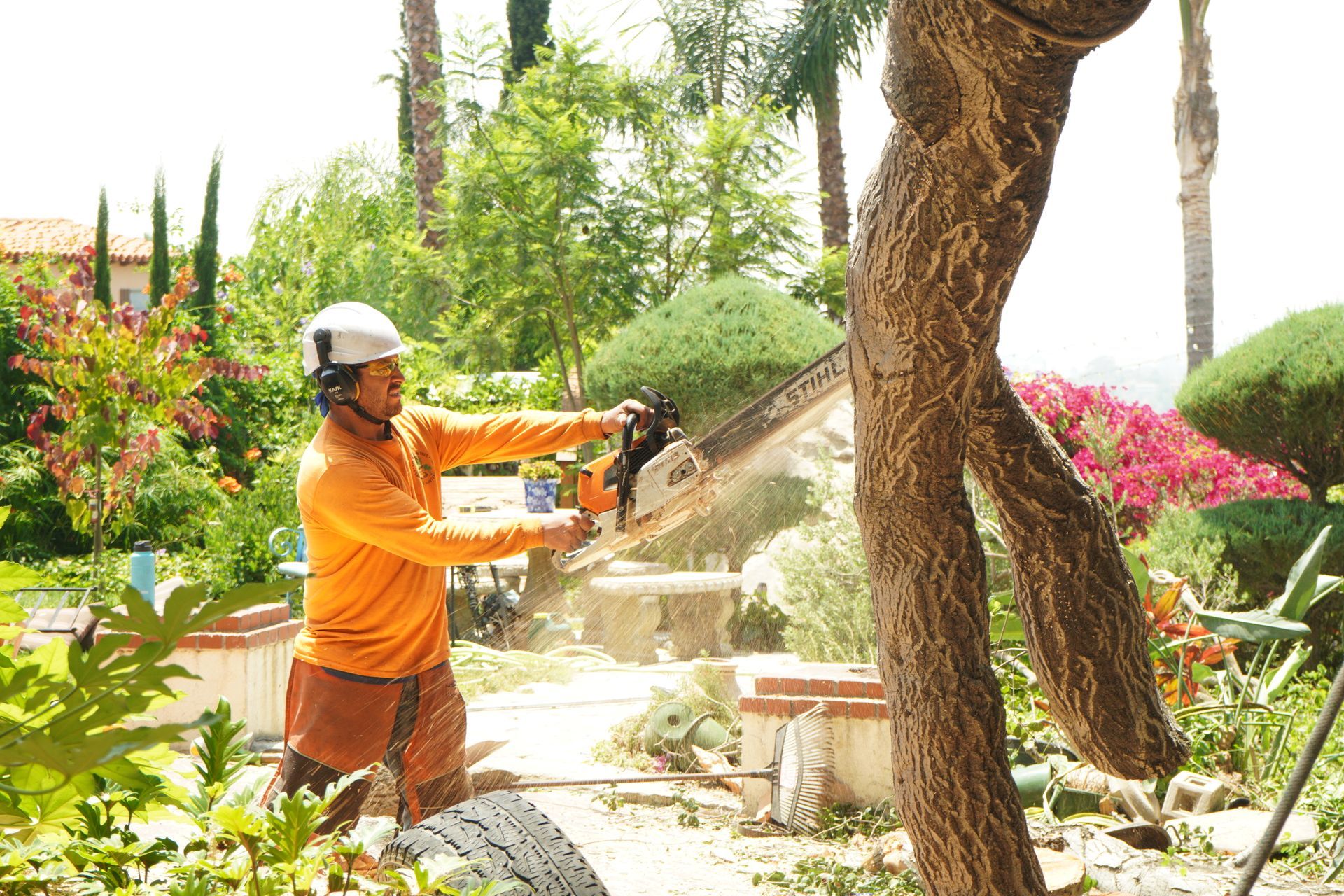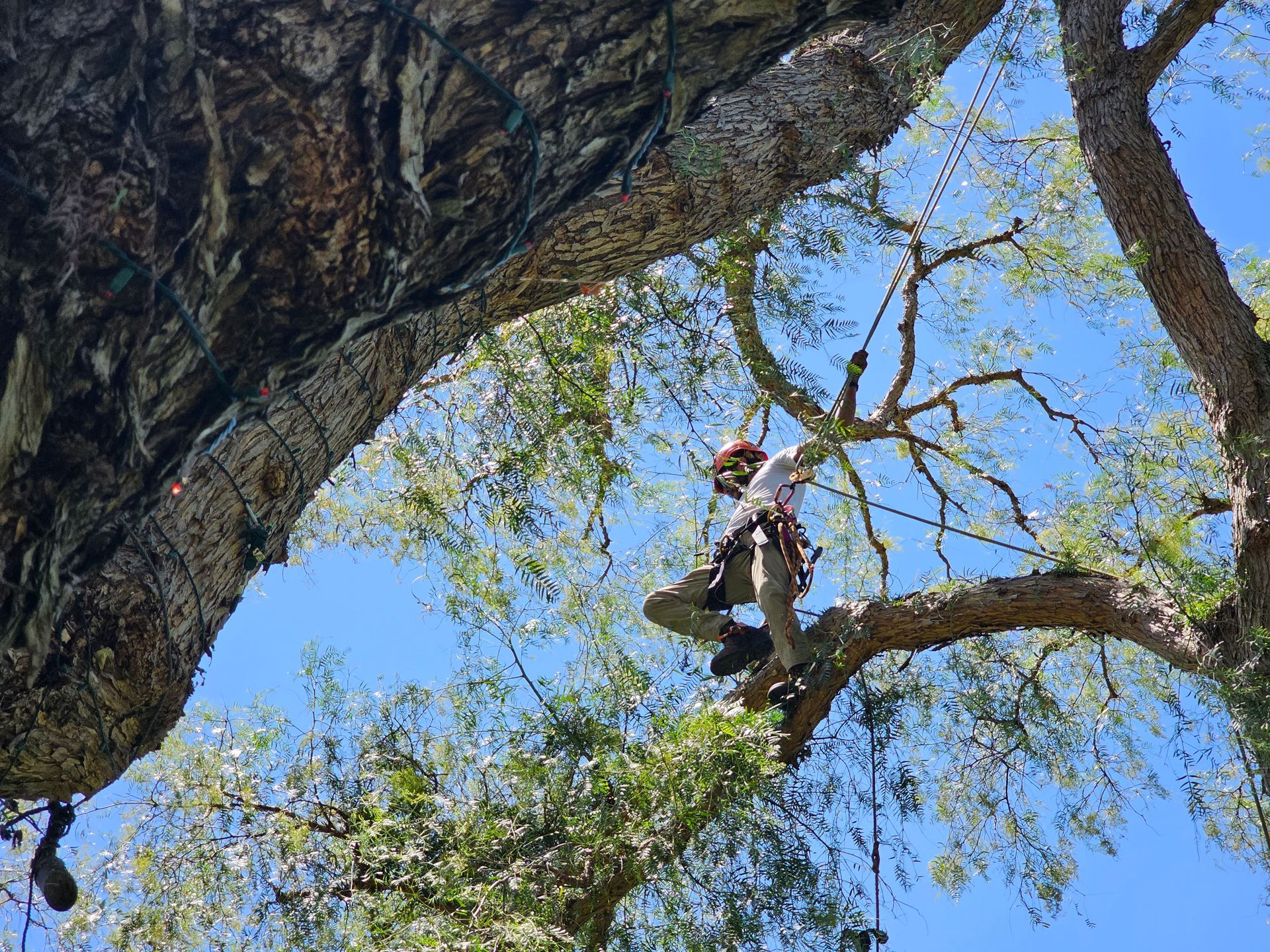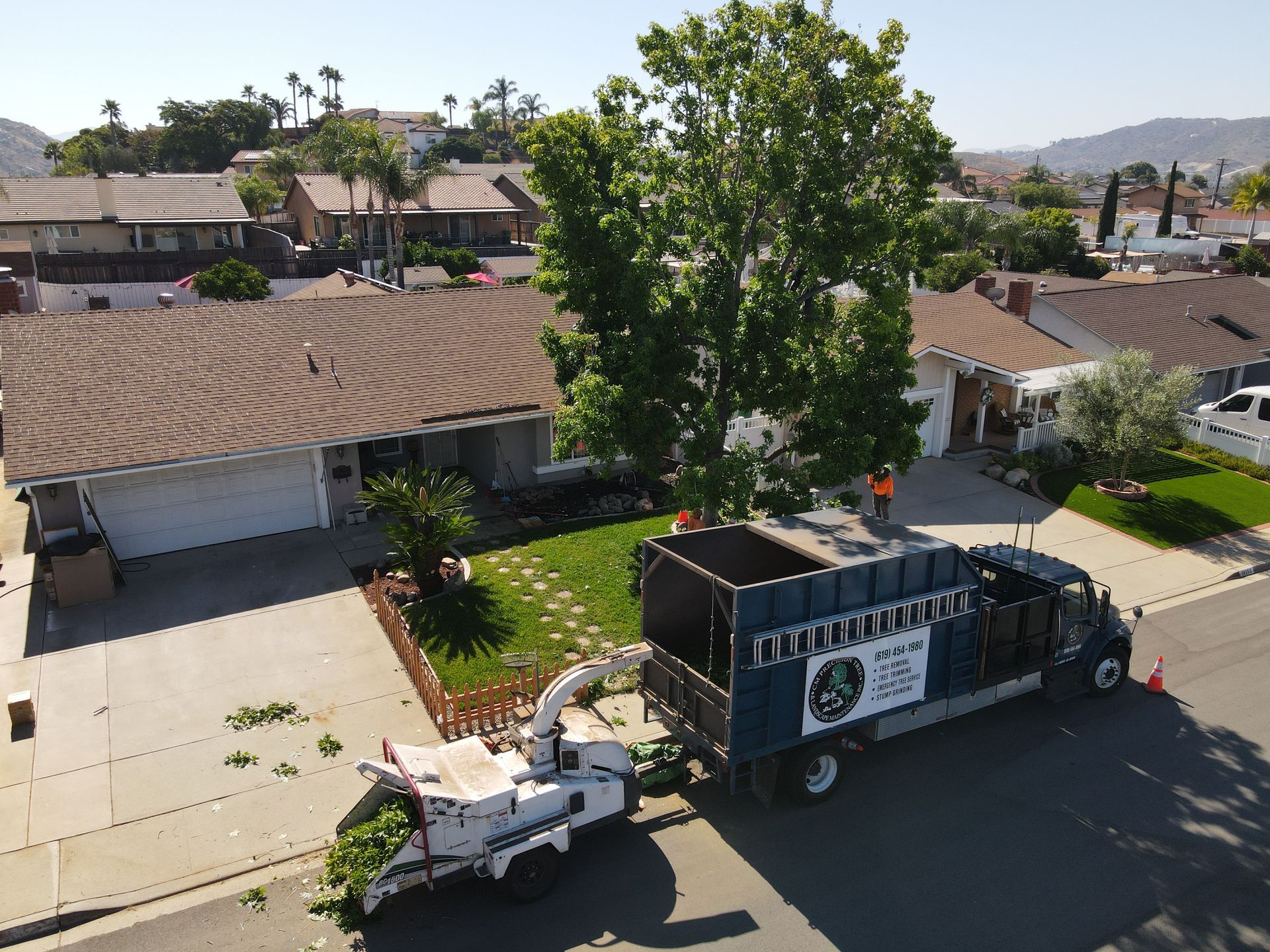Call Us Today! (619) 983-1030
Your Local San Diego Tree Trimming Landscape Maintenance & Stump Grinding Company
Common Types of Tree Emergencies
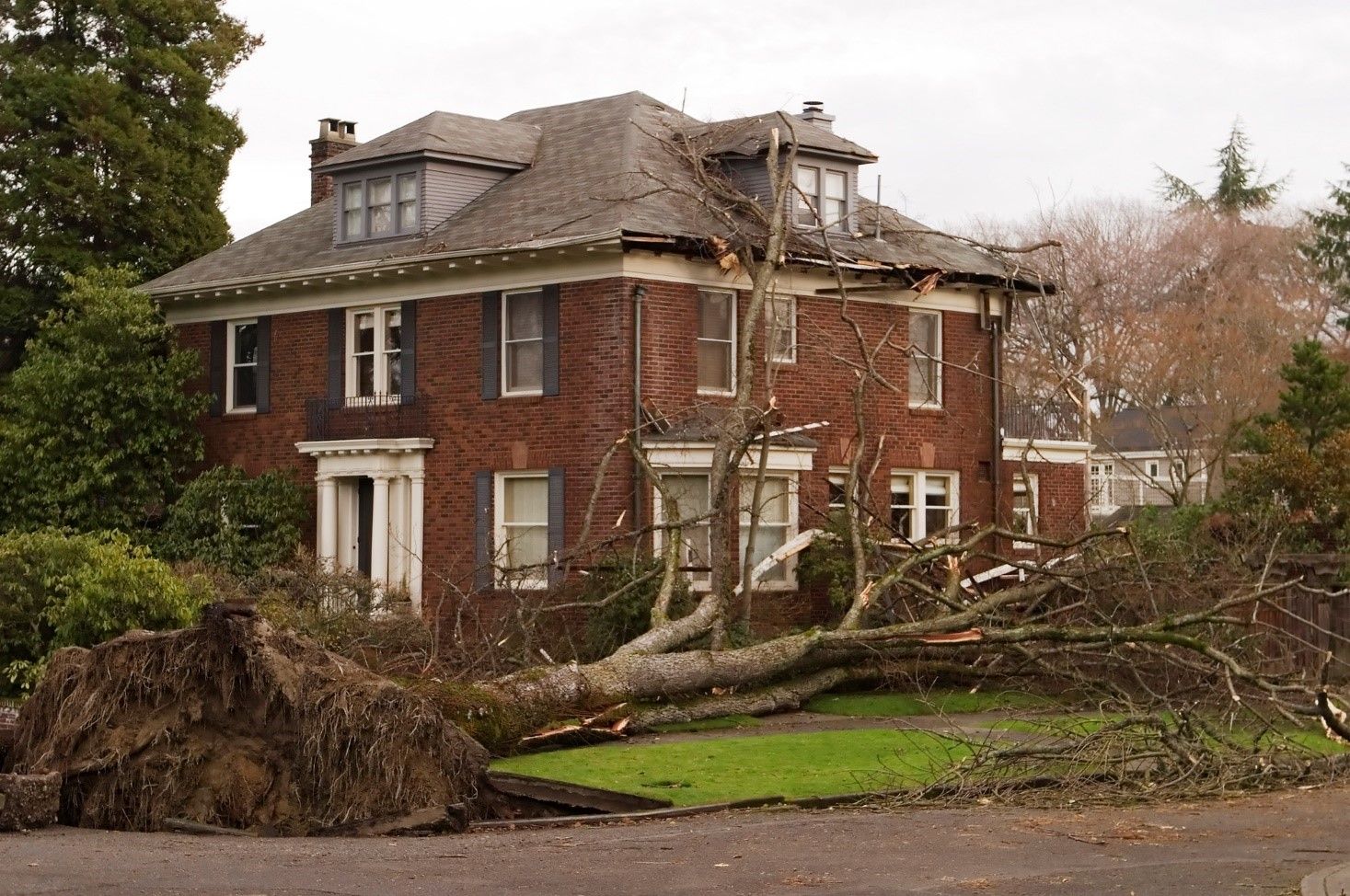
Trees are a wonderful addition to any home. But things can go wrong with your tree, leading to costly and dangerous emergencies. Discover common types of tree emergencies.
Storm Damage
Storm damage is a prevalent tree emergency, often resulting from severe weather events. When powerful winds sweep through an area, they can exert immense pressure on a tree's branches and trunk. This can lead to various forms of damage, such as branches snapping off or entire trees uprooting.
The risk of wind-related tree emergencies is particularly high in regions prone to hurricanes or tornadoes. Heavy snowfall and ice accumulation can add significant weight to branches, causing them to bend or break. Lightning strikes during storms are another peril, potentially splitting the trunk or causing fires in the tree's canopy.
Root Problems
A tree's root system plays a pivotal role in its health and stability, and when root problems arise, they can result in emergencies. Root rot, a fungal infection that affects the roots, can weaken a tree's foundation and make it susceptible to uprooting during storms or high winds.
Girdling roots, which encircle the tree trunk and constrict its growth, is another root-related issue that can lead to reduced stability and nutrient uptake. These problems often go unnoticed until they reach a critical stage, underscoring the importance of regular tree inspections.
Structural Issues
Trees with structural problems pose significant safety risks. When a tree develops cracks in its trunk or branches, it compromises its structural integrity, making it vulnerable to failure.
Cavities or hollows within the trunk can further weaken the tree's strength and stability, especially in older or mature trees. These structural issues are often hidden from view, and a thorough inspection by an arborist is necessary to detect them early and take appropriate measures to mitigate the risks they pose.
Leaning Trees
A tree that suddenly leans excessively or leans in an unexpected direction can be an emergency, particularly if it threatens to fall on property or people. Leaning trees might indicate root damage, soil erosion, or structural issues that need immediate attention. The risk of a leaning tree toppling over raises concerns about safety and requires professional assessment to determine if it can be saved or must be removed.
Fallen Trees or Branches
Perhaps one of the most immediate and alarming tree emergencies is when a tree or a substantial branch has already fallen. Fallen trees can block roads, damage structures, and pose a serious risk to anyone nearby. Dealing with fallen trees requires prompt action from trained professionals to clear the area and assess the damage safely.
Fire Damage
Trees damaged by wildfires can become unstable and pose long-term risks. While fire can cause immediate harm by scorching bark and weakening branches, the true danger lies in the post-fire condition of the tree. Fires can leave trees with compromised structural integrity and health, making them prone to collapsing in the future. As such, fire-damaged trees often require careful evaluation and possible removal to ensure safety.
Utility Line Interference
Trees growing too close to power lines or utility infrastructure can lead to tree emergencies when branches or the tree itself interfere with these essential services. In addition to potential power outages, such situations pose fire hazards and endanger the safety of utility workers. Preventative measures like regular tree trimming near utility lines can help mitigate this emergency risk.
Overcrowding
Planting trees too closely together can lead to overcrowding, which can create competition for resources like sunlight, water, and nutrients. Overcrowded trees may become stressed, stunted in growth, and more susceptible to disease or structural problems. Consider spacing when planting trees to ensure they have enough room to thrive.
CM Precision Tree and Landscape Maintenance Inc. can help handle any tree emergency. Our services include tree removal and trimming.
Contact us to get started.
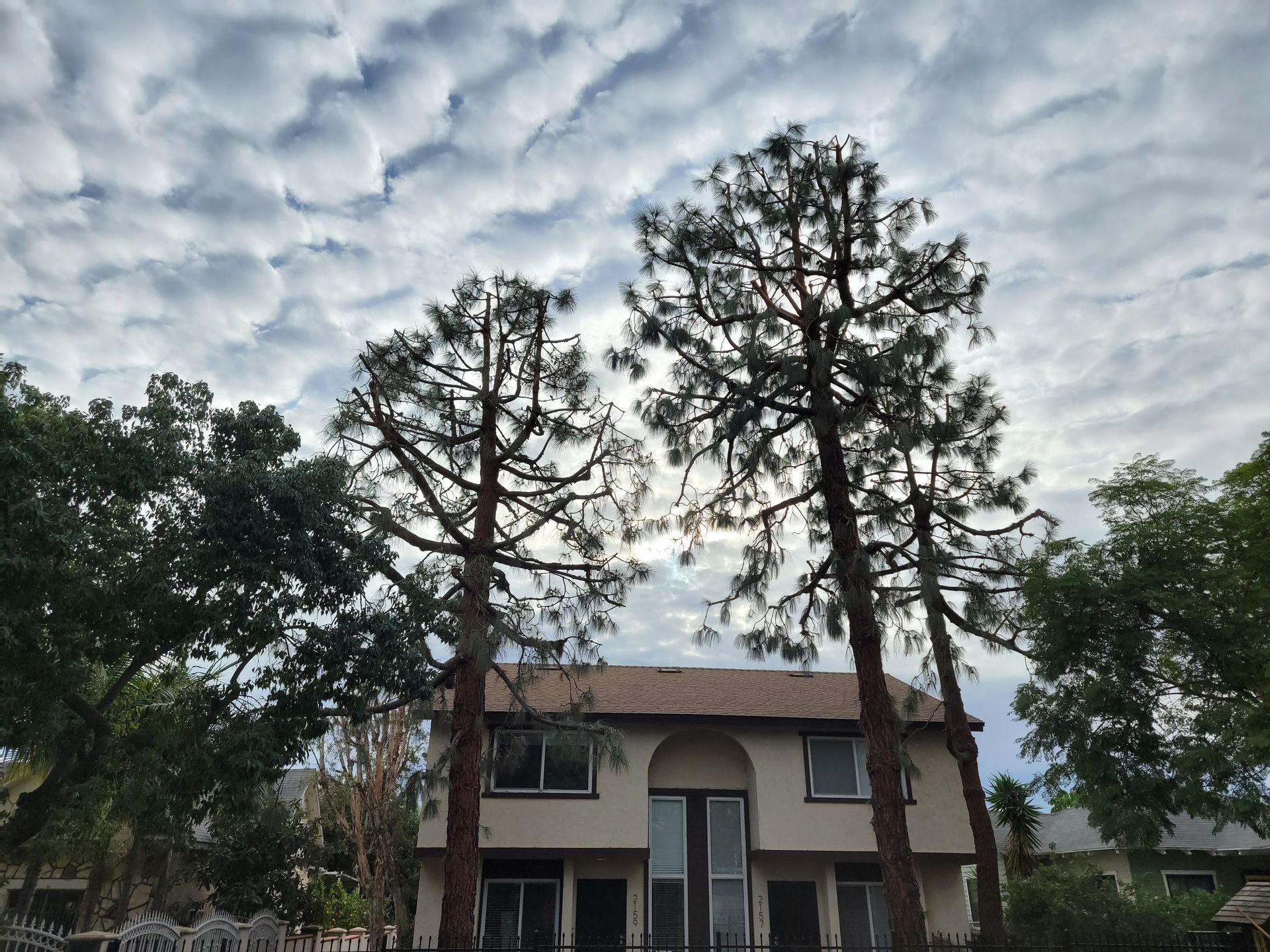
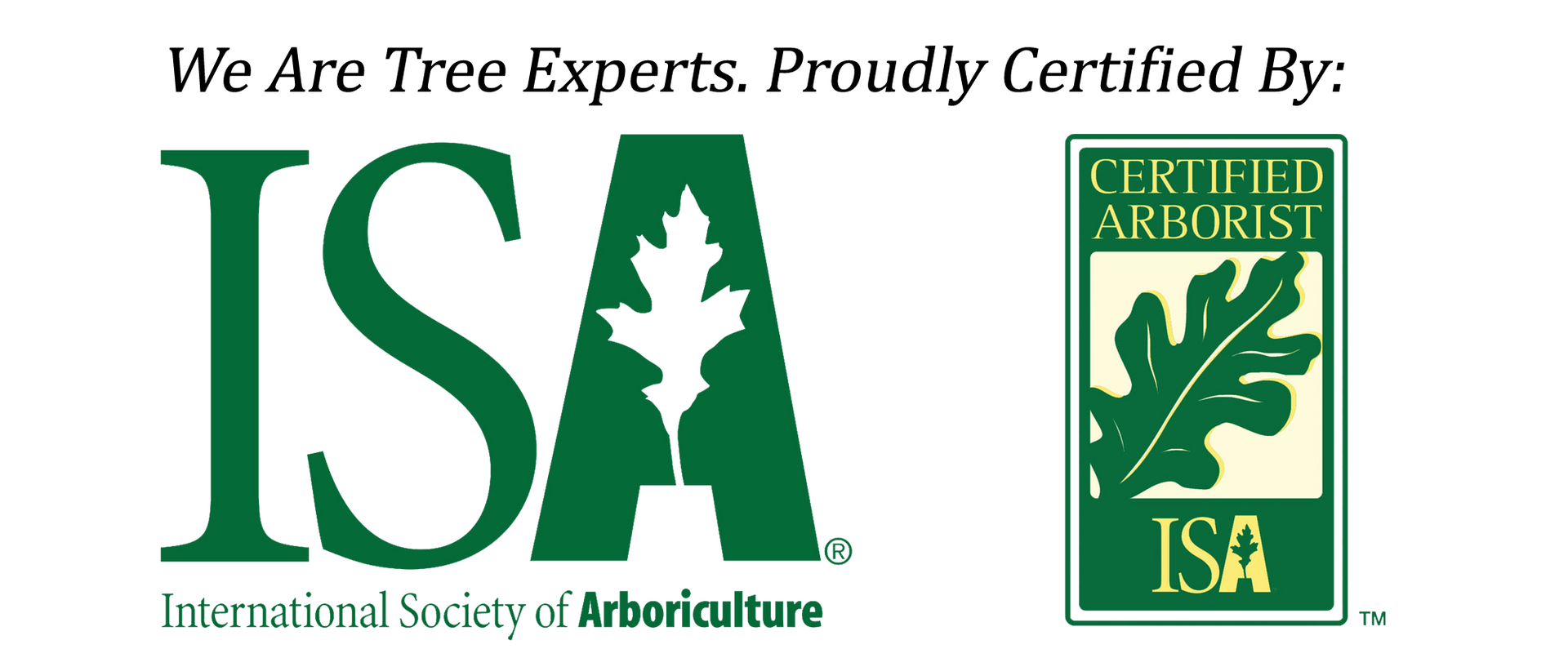

CONTACT INFORMATION
Phone: (619) 983-1030
Email: cmprecisiontree@gmail.com
Address: 4401 Twain Avenue, San Diego, CA 92120
Licensed, Bonded, & Insured
Licence # 955841






BUSINESS HOURS
- Mon - Sun
- Open 24 Hours
